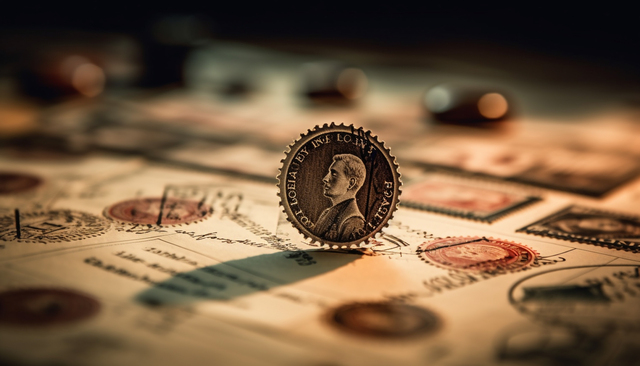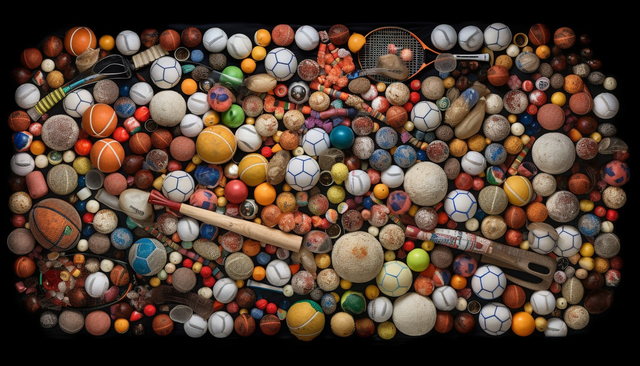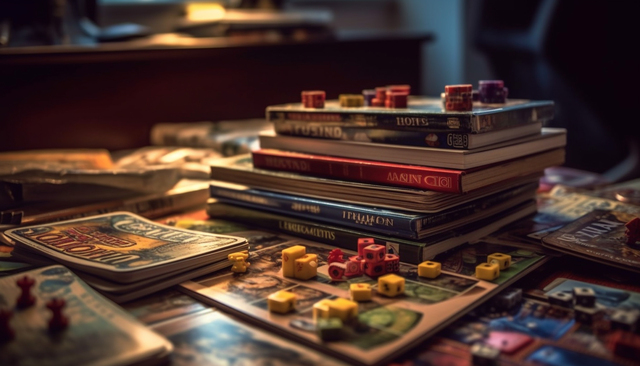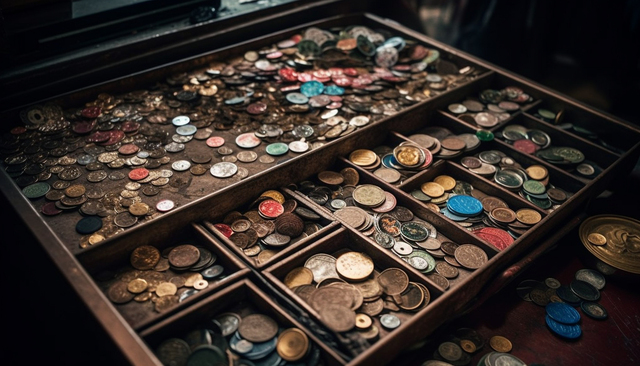Collecting might have started as a hobby for many, often reminiscent of childhood memories hoarding stamps, coins, or baseball cards. Yet, as adulthood looms and the world of investments beckons, the realm of coins and collectibles has emerged as a serious avenue for diversifying portfolios. Beyond the stock market, real estate, and precious metals, coins and collectibles offer a tangible asset that can appreciate over time, with the added bonus of historical and cultural significance. For the budding investor looking to dabble in this fascinating world, it’s crucial to identify which items have historically performed best.
Coins: When it comes to investing, coins, especially rare ones, are among the top choices. Their limited availability and historical significance often drive up their value. Notably, gold and silver coins, such as the American Eagle, have intrinsic value due to their metal content and act as a hedge against inflation. Meanwhile, ancient coins, such as Roman denarii, exude historical allure and can fetch hefty prices if preserved well.
Stamps: While the digital age has certainly changed the way we communicate, rare and historic stamps continue to be of value to collectors and investors alike. The ‘Inverted Jenny’, for instance, is a misprint stamp that has captured the imaginations of many for its rarity and story.
Sports Memorabilia: Be it Michael Jordan’s rookie card or Babe Ruth’s signed baseball, sports memorabilia offers both nostalgia and investment potential. Items associated with legendary figures or pivotal moments in sports history can appreciate remarkably over time.
Art: Even though art is a broader category, it remains a classic collectible. From ancient sculptures to contemporary paintings, the value of art pieces has seen a consistent rise, especially when associated with renowned artists or movements.
Vintage Cars: There’s something undeniably alluring about a classic car. Beyond their beauty and engineering, they represent an era gone by. Rare models, limited editions, and cars with significant historical ties can fetch astronomical prices.
Comic Books: With the surge of superhero movies, vintage comic books, especially first editions or ones introducing iconic characters, have seen their value soar.
Wine & Whiskey: A good vintage isn’t just for sipping. Fine wines and rare whiskey bottles, stored correctly, can appreciate substantially over the years.
Toys: Sounds surprising? Vintage toys, especially those in mint condition or in their original packaging, can be worth a fortune. The likes of early Star Wars action figures or original Barbie dolls have become highly sought-after.
Embarking on the journey of investing in coins and collectibles is not just about monetary returns. It’s about owning a piece of history, connecting with nostalgia, and indulging one’s passions. However, like all investments, it requires research, understanding, and a keen eye for authenticity. As you delve into this world, remember that the joy of the hunt and the stories behind these items can be just as rewarding as their potential financial gains. Welcome to the intricate tapestry of coins and collectibles. Your treasure hunt begins now!
Coins
When considering investment in coins, it’s crucial to remember that the coin market can be volatile and unpredictable.

Still, many seasoned investors and collectors find great value in certain coins, both in terms of their monetary and historical significance. Here are some of the most commonly recognized coins deemed worthy of investment:
- American Gold Eagle: Introduced in 1986, the American Gold Eagle is a popular choice among investors, primarily because of its gold content and its backing by the U.S. government.
- Canadian Maple Leaf: Known for its purity, the Canadian Maple Leaf made from gold, silver, platinum, or palladium is a sought-after coin for investors.
- South African Krugerrand: This gold coin is cherished not just for its gold content but also for its unique history, being one of the first gold bullion coins available to the public in the 1970s.
- American Silver Eagle: Like its gold counterpart, the Silver Eagle is a trusted investment coin, lauded for its silver content and backing by the U.S. government.
- Swiss 20 Franc Helvetias: A classic European gold bullion coin, the Swiss Franc Helvetia features a neat design and carries significant historical value.
- British Gold Sovereign: With a rich history dating back to 1817, the British Gold Sovereign is a small gold coin with a storied past and consistent investor interest.
- Chinese Gold Panda: The design of this coin changes annually, making each year’s minting unique. This characteristic often attracts both investors and collectors.
- Australian Kangaroo/Nugget: Produced by the Perth Mint, these coins are known for their purity and designs that depict various portrayals of kangaroos, Australia’s iconic marsupial.
- Pre-1933 U.S. Gold Coins: Coins like the Saint-Gaudens Double Eagles and Liberty Head designs are favored not only for their gold content but also for their historical significance and numismatic value.
- Ancient Coins: Coins from the Roman, Greek, Byzantine, and other ancient civilizations can hold significant value, especially if they’re well-preserved and have a traceable provenance.
Remember, when considering coin investments:
- Research: It’s imperative to stay informed about the market, understand the coin grading system, and be wary of potential counterfeits.
- Buy from reputable dealers: Ensuring authenticity is crucial. It’s always a good practice to purchase from well-known, established dealers.
- Consider storage: If you’re investing in a significant number of coins, think about secure storage options, such as safe deposit boxes.
Lastly, as with any investment, it’s always advisable to consult with a financial advisor or expert in numismatics before making significant coin purchases. The values and demand for specific coins can change over time based on various global factors, so what might be considered “best” today may change in the future.
Stamps
Investing in stamps can be both a fascinating and lucrative endeavor, offering a unique blend of history, art, and commerce.

As with any collectible, market dynamics can change. Here are some of the most renowned stamps often deemed worthy of investment:
- The Inverted Jenny (1918): This is perhaps one of the most famous stamps in the world due to its printing error where a biplane was printed upside-down.
- Penny Black (1840): The world’s first adhesive postage stamp from the UK is always in demand. It’s not rare, but its significance makes it collectible.
- Two Pence Blue (1840): Issued around the same time as the Penny Black, the Two Pence Blue is rarer and, in pristine condition, can be highly valued.
- Treskilling Yellow (1855): A misprint from Sweden, this stamp should have been green but was accidentally printed in yellow, making it one of the most expensive stamps in the world.
- The Red Mercury (1856): This stamp from Austria is valued for its beauty and rarity, especially the version used for newspapers.
- British Guiana 1c Magenta (1856): Known as the world’s most famous stamp, only one copy of this stamp is known to exist, making it exceedingly rare.
- The Mauritius “Post Office” Stamps (1847): These are among the world’s first colonial stamps and are treasured for their historical significance and rarity.
- U.S. “Z Grill” (1868): Only two of these American stamps are known to exist, recognized by the distinctive ‘Z’ pattern on the back used to prevent removal and reuse.
- The Chinese Red Revenue Stamps: These come in various denominations and are highly sought after, especially the $1 version.
- Bermuda Postmaster Provisional (1848): A rare stamp where only a few genuine examples are known to exist.
A few considerations for stamp investing:
- Condition: The value of stamps is highly sensitive to their condition. Look for stamps that are well-preserved, with clear colors, sharp impressions, and without damage.
- Rarity: Stamps issued in limited numbers or due to printing errors are generally more valuable.
- Provenance: The stamp’s history of ownership can add to its value, especially if previously owned by a famous collector or if it has a well-documented history.
- Certification: For high-value stamps, certification from a reputable organization can verify authenticity and grade.
- Buy from reputable dealers: This minimizes the risk of purchasing counterfeits or misrepresented items.
As with coins and collectibles, the stamp market can be unpredictable. Before making significant investments, it’s advisable to consult with experts in philately. Keeping an ear to the ground for market trends and emerging areas of interest can also prove beneficial for potential investors.
Sports Memorabilia
Sports memorabilia offers an exciting opportunity for enthusiasts and investors alike, fusing passion for sports with the allure of tangible assets.

The value of sports memorabilia often hinges on rarity, provenance, condition, and, of course, the athlete or event’s significance. Here are some of the most prized categories and items in sports memorabilia:
- Rookie Cards: Historically, rookie cards of legendary athletes have garnered significant value, especially in mint condition. Notable examples include:
- Michael Jordan’s 1986 Fleer rookie card.
- Mickey Mantle’s 1952 Topps rookie card.
- LeBron James’ 2003 Upper Deck rookie card.
- Game-Worn Jerseys: Apparel worn by athletes during significant games can fetch hefty sums. For example:
- Michael Jordan’s game-worn Chicago Bulls jerseys.
- Babe Ruth’s New York Yankees jerseys.
- Lionel Messi and Cristiano Ronaldo’s game-worn soccer jerseys.
- Autographed Memorabilia: Items signed by iconic sports figures, especially with proven documentation or photos of the signing, are highly sought after. This includes baseballs, basketballs, footballs, bats, and gloves.
- Historic Tickets and Programs: Original tickets or programs from significant sports events, like the first Super Bowl, World Series games, or Olympic events, have become collectible.
- Game-Used Equipment: Bats, gloves, balls, helmets, and other gear used in notable games or by legendary athletes are highly desirable. Examples include:
- Babe Ruth’s used baseball bat.
- Game-used balls from Super Bowl or World Cup finals.
- Championship Rings: Authentic rings awarded to players and staff after winning championships, especially from storied franchises, can be valuable.
- Historic Photos: Original photos capturing iconic moments, especially if signed or annotated, can be highly collectible.
- Olympic Memorabilia: Medals, torches, pins, and other memorabilia from the Olympics, particularly from early games or significant moments, are treasured by collectors.
- Boxing Memorabilia: Gloves, trunks, or robes worn by legendary boxers like Muhammad Ali, Mike Tyson, or Floyd Mayweather can be valuable, especially if linked to famous bouts.
- Rare Collectibles: Items that were limited in number or tied to significant events, like bobbleheads, figurines, or special edition items, can appreciate in value over time.
A few tips for investing in sports memorabilia:
- Authentication: Always ensure the authenticity of an item before purchase. Certificates of authenticity (COAs) or third-party grading services can help in this regard.
- Condition: The item’s condition can significantly impact its value. Look for items that are well-preserved and free of significant damage.
- Research: Understand the athlete’s significance, the rarity of the item, and the market trends before making a purchase.
- Diversify: Just like traditional investments, diversify your holdings to mitigate risks.
As the world of sports continues to evolve, the significance of athletes and events might shift. Therefore, like with all coins and collectibles, always stay updated with the sports world and consider consulting with experts in sports memorabilia before making large investments.
Art
Investing in art offers a unique blend of aesthetic pleasure and financial potential.

However, it’s essential to recognize that the art market can be unpredictable, shaped by various socio-economic, historical, and cultural factors. Here are some sectors and aspects of the art market that have been particularly noteworthy for investors:
- Blue-Chip Artists: Works by established artists who have stood the test of time are often seen as “safe bets” in the art world. Examples include Pablo Picasso, Vincent van Gogh, Leonardo da Vinci, and Jackson Pollock.
- Contemporary Artists: While riskier than investing in established names, emerging contemporary artists offer potential for significant returns. Artists such as Banksy, Kehinde Wiley, and Yayoi Kusama have seen increasing attention in recent years.
- Post-War and Modern Art: This era produced many influential artists and movements, like Abstract Expressionism, Pop Art, and Minimalism. Key figures include Andy Warhol, Mark Rothko, and Jean-Michel Basquiat.
- Chinese and Asian Art: With Asia’s rising economic power, there’s been a surge in interest in traditional and contemporary Asian art, especially from China, Japan, and Korea.
- African and Afro-Diasporic Art: Recognizing the previously overlooked contributions of African and Afro-Diasporic artists, this segment has seen growing attention and appreciation.
- Photography: Once sidelined in favor of traditional mediums, fine art photography by artists like Cindy Sherman, Ansel Adams, and Dorothea Lange has become increasingly collectible.
- Street and Urban Art: Artists who began their careers on the streets, such as Banksy, Shepard Fairey, and RETNA, have found their way into prestigious galleries and auctions.
- Digital and NFT Art: A burgeoning field, digital art – especially when tied to blockchain technology as Non-Fungible Tokens (NFTs) – has witnessed explosive growth, with artists like Beeple making headlines.
- Latin American Art: Artists like Frida Kahlo, Diego Rivera, and Roberto Matta have long been recognized, but the broader Latin American art scene has been gaining traction.
- Sculpture and Installations: While paintings often dominate the conversation, unique sculptures and installations by artists like Jeff Koons and Anish Kapoor have fetched impressive prices at auction.
When investing in art, consider the following:
- Research: Engage in deep research or hire an art consultant. Understand an artist’s significance, their trajectory, and the broader art movements at play.
- Provenance: The item’s history of ownership can add to its value and authenticity. A well-documented provenance is crucial, especially for high-value pieces.
- Condition: The state of the artwork can significantly impact its value. Ensure that the artwork is well-preserved and undamaged.
- Authentication: Authenticity is paramount. Ensure that the artwork has been authenticated by experts, especially if it’s by a notable artist.
- Patience: Art is a long-term investment. While some sectors of the art market can heat up quickly, it’s generally best to approach art investment with patience.
Remember, while financial gains can be a motivator, the joy and cultural enrichment that art provides are unmatched. Always buy art that you love and would enjoy having in your collection, regardless of its potential future value.
Vintage Cars
Investing in vintage cars, like other coins and collectibles, combines a passion for automotive history with the thrill of collecting tangible, functional assets.

Vintage cars have garnered attention not only for their nostalgic allure but also for the potential investment returns. Here are some vintage cars that have been particularly prized by collectors and investors:
- Ferrari 250 GTO: One of the most iconic and valuable vintage cars, the Ferrari 250 GTO, holds records for some of the highest prices ever fetched at auctions.
- Mercedes-Benz 300 SL Gullwing: Known for its distinctive upward-opening doors, this car is a symbol of 1950s luxury and engineering.
- Porsche 911 (Early Models): The Porsche 911, especially models from the 1960s and 1970s, has seen a surge in value due to its timeless design and performance.
- Aston Martin DB5: Immortalized by the James Bond films, the DB5 combines British luxury with performance.
- Lamborghini Miura: Often credited as the first supercar, the Miura is sought after for its groundbreaking design and engineering.
- Duesenberg Model J: A symbol of pre-war American luxury, the Duesenberg Model J is highly prized by collectors.
- Ford GT40: Famous for its Le Mans victories and rivalry with Ferrari, the GT40 is a piece of racing history.
- Jaguar E-Type: Enzo Ferrari once called it “the most beautiful car ever made,” and the E-Type remains a paragon of 1960s design.
- Chevrolet Corvette (C1 and C2 generations): As America’s sports car, early Corvette models, especially the “Sting Ray,” have become increasingly collectible.
- Alfa Romeo Spider (Duetto): Made famous by the film “The Graduate,” this classic roadster is appreciated for its design and driving experience.
Investing in vintage cars requires careful consideration:
- Provenance and History: Cars with a unique story, previous famous ownership, or a racing pedigree often command higher prices.
- Originality: Original parts and matching numbers (where the engine and chassis numbers match) can significantly increase a car’s value.
- Condition and Restoration: Well-preserved cars or those restored to a high standard (preferably by renowned restoration shops) are more valuable. However, overly restored cars or those that lack originality can be less desirable.
- Rarity: Limited production models or those with unique features often fetch higher prices.
- Market Trends: Engage in research or consult with automotive experts to gauge which cars are gaining interest.
- Maintenance: Vintage cars require meticulous care. Consider the costs and logistics of maintaining and storing a vintage car in optimal condition.
- Documentation: Detailed records of service, restoration, and provenance can enhance a car’s value and appeal.
As with other coins and collectibles, it’s wise to buy what you love. The pleasure of owning and driving a vintage car adds intangible value beyond mere financial gains. And while the market for vintage cars has seen impressive returns in the past, it’s essential to approach such investments with caution and thorough research.
Comic Books
Comic books, like coins and collectibles, have long been a source of entertainment, but in recent decades, they’ve also emerged as a legitimate investment avenue.

The right comic book, kept in pristine condition, can appreciate considerably over time. The following are some of the most sought-after comic books, both for their historical significance and their investment potential:
- Action Comics #1 (1938): This is the comic that introduced Superman to the world, making it one of the most valuable comics ever. If you ever come across an original in good condition, it’s a gold mine.
- Detective Comics #27 (1939): This issue marks the debut of Batman. Like Superman’s debut, this comic is incredibly valuable.
- Amazing Fantasy #15 (1962): Spider-Man’s first appearance remains one of the most sought-after comic books for collectors and investors.
- X-Men #1 (1963): The original debut of the X-Men, written by Stan Lee and illustrated by Jack Kirby, is highly desirable.
- The Incredible Hulk #1 (1962): The first appearance of the Hulk is a key issue for any collector.
- Fantastic Four #1 (1961): As Marvel’s first superhero team created by Stan Lee and Jack Kirby, this issue is both historically significant and valuable.
- Wonder Woman’s debut in All Star Comics #8 (1941): As one of the first major female superheroes, Wonder Woman’s debut is highly prized.
- Batman #1 (1940): While Batman debuted in Detective Comics, his eponymous series’ first issue, which also introduced the Joker and Catwoman, is a collector’s gem.
- The Walking Dead #1 (2003): A more recent comic compared to others on this list, but given the massive success of the TV series adaptation, this issue has seen significant appreciation.
- Iron Man’s debut in Tales of Suspense #39 (1963): The birthplace of Tony Stark/Iron Man, this comic has grown in value, especially with the success of the Marvel Cinematic Universe.
Tips for investing in comic books:
- Condition is Key: The condition, or “grade,” of a comic book plays a massive role in its value. The difference between a near-mint comic and a good/fair condition can be thousands, if not millions, of dollars.
- First Appearances: Comics that mark the first appearance of a popular character usually have the most value.
- Key Issues: Beyond first appearances, other significant events, like character deaths or major storyline initiations, can also be valuable.
- Golden Age Comics: Comics from the late 1930s to the early 1950s (known as the Golden Age) tend to be more valuable than newer issues, especially in good condition.
- Buy What You Love: While investing in comic books can be profitable, it should also be a labor of love. Choose comics that you personally enjoy.
- Authentication: Ensure your comics are authenticated and graded by reputable services, such as the Certified Guaranty Company (CGC).
- Stay Updated: The comic book market can be influenced by external factors, such as movie releases, TV adaptations, or the passing of famed creators. Stay updated with industry news.
Remember, as with coins and collectibles, while there’s potential for significant returns in the comic book market, there’s also risk, as with any investment. It’s always wise to research thoroughly or consult with experts before making substantial investments.
Wine & Whiskey
nvesting in fine wines and whiskeys has grown in popularity as enthusiasts recognize the potential for certain bottles to appreciate over time.

However, the world of alcoholic beverages is vast, and not every bottle will necessarily be a good investment. Below are some of the most sought-after wines and whiskeys:
Wine:
- Bordeaux Wines: The Bordeaux region in France is synonymous with collectible and investment-worthy wines. Notable châteaux include:
- Château Margaux
- Château Lafite Rothschild
- Château Latour
- Château Haut-Brion
- Château Mouton Rothschild
- Burgundy Wines: Another French region known for its exceptional wines. Some top producers are:
- Domaine de la Romanée-Conti (DRC)
- Domaine Leroy
- Domaine Leflaive
- Italian Wines: Italy’s top wine regions, like Tuscany and Piedmont, have wines that age beautifully and can be great investments:
- Sassicaia
- Masseto
- Barolo (from producers like Giacomo Conterno)
- Brunello di Montalcino (from producers like Biondi-Santi)
- Cult Californian Wines: These are often small-production wines from California that have developed a dedicated following.
- Screaming Eagle
- Harlan Estate
- Opus One
- Dominus Estate
Whiskey:
- Scottish Single Malts: These have historically been the most sought-after whiskies for collectors.
- Macallan (especially older vintages or limited editions)
- Bowmore (particularly Black Bowmore)
- Port Ellen
- Brora
- Japanese Whisky: The Japanese whisky market has exploded in recent years, with several bottles appreciating significantly.
- Yamazaki (especially the older Sherry Cask releases)
- Hibiki (30-year-old and limited editions)
- Chichibu (limited editions)
- American Whiskey: Bourbon and rye whiskeys, especially limited releases, have gained a following.
- Pappy Van Winkle Family Reserve (especially the 15, 20, and 23-year-old)
- Michter’s limited releases
- George T. Stagg
- Irish Whiskey: As the category grows in popularity, some brands are emerging as collectibles.
- Midleton Very Rare
- Redbreast (older age statements)
Investment Tips:
- Storage: Proper storage is crucial. Wines should be stored horizontally in a cool, dark place, preferably in a wine cellar or a wine fridge. Whiskeys should be stored upright and away from sunlight.
- Provenance: Know where the bottle comes from. Its history, storage conditions, and any potential for tampering or counterfeiting can impact its value.
- Trends: The beverage market can be influenced by trends. For instance, the rise in Japanese whisky’s popularity was rapid, and prices skyrocketed.
- Diversify: As with any investment, it’s wise not to put all your eggs in one basket. Diversify across different wines or whiskies.
- Enjoy the Journey: While investing in wines and whiskeys can be profitable, it’s also about passion. Even if you’re looking at it from an investment angle, take the time to learn about and appreciate the nuances and histories of the bottles you’re buying.
Finally, as with all coins and collectibles, be cautious and do your research. The wine and whiskey market, like any other, has its pitfalls. Counterfeit bottles, especially of high-end wines and whiskies, have been a growing concern in recent years. Always buy from reputable sources and consider having valuable bottles authenticated.
Toys
Toys, though often seen primarily as sources of entertainment and nostalgia, can also serve as valuable investment assets when chosen wisely. Over the years, specific toys have significantly appreciated in value due to factors like rarity, condition, cultural significance, and demand among collectors. Here’s a list of toys that have shown promise as solid investments:
- Vintage Star Wars Action Figures: First released in the late 1970s by Kenner, especially those in mint condition or rare figures like the “Vinyl Cape Jawa” or “Rocket Firing Boba Fett” can fetch substantial amounts.
- LEGO Sets: Especially limited edition or discontinued sets, such as the Star Wars Millennium Falcon or Taj Mahal. Sets that are unopened and in their original packaging tend to be the most valuable.
- Comic-Con Exclusives: Toys or figures that were available exclusively at events like San Diego Comic-Con often have a limited production run and can be very sought after.
- Barbie Dolls: Vintage Barbie dolls, especially from the 1950s and 1960s, can be of great value. Special edition or designer Barbie dolls can also be worth investing in.
- Hot Wheels: Rare models, especially from the 1960s and 1970s, like the “Pink Rear-Loading Volkswagen Beach Bomb,” can be incredibly valuable.
- Transformers: The original G1 (Generation 1) Transformers toys, especially those still in the box, can fetch handsome sums.
- Magic: The Gathering Cards: Especially the “Power Nine” cards, which include the Black Lotus and Time Walk.
- Video Games: Rare games or limited editions, especially for older systems, can be quite valuable. Factory-sealed games, like those for the Nintendo Entertainment System (NES), are especially prized.
- American Girl Dolls: The original dolls from the Pleasant Company era can be worth significantly more than their initial retail price.
- G.I. Joe Action Figures: Especially the 1960s and 1970s versions. Figures still in the packaging and in mint condition are the most valuable.
- Teddy Bears: Especially those made by famous manufacturers like Steiff.
Tips for Investing in Toys:
- Condition Matters: Toys in their original packaging, undamaged, and unused (mint condition) will always fetch the highest prices.
- Rarity: Limited editions, short production runs, or toys that had manufacturing defects that were pulled from the shelves tend to be the most sought after.
- Cultural Significance: Toys associated with iconic movies, shows, or cultural movements are more likely to increase in value.
- Authenticity: Be wary of fakes or reproductions. Ensure the toy’s authenticity, especially when investing a significant amount.
- Storage: Keep toys away from direct sunlight, moisture, and extreme temperatures. Proper storage can help maintain a toy’s condition over time.
- Stay Updated: Join collector groups, participate in forums, and regularly check auction sites to stay updated on market trends.
- Buy What You Love: Investing in toys should also be a passion. While potential profits are a bonus, the joy and nostalgia they bring can be priceless.
- Diversify: Don’t put all your money into one type of toy. Diversifying across different toys or categories can mitigate potential risks.
Finally, as with all coins and collectibles, while investing in toys can be lucrative, it’s essential to understand that the market can be unpredictable. What’s popular today might not necessarily be in demand tomorrow. It’s always best to do thorough research and perhaps consult with seasoned collectors before making significant investments.
Conclusion
In the ever-evolving world of investments, coins and collectibles stand out as unique assets that blend history, culture, and tangible value. While stocks and bonds might represent a modern investor’s primary focus, coins and collectibles have consistently demonstrated resilience in the marketplace. The allure of coins and collectibles lies not just in their potential for financial return but also in the stories they tell and the legacies they carry. Whether you’re a novice just stepping into the realm of coins and collectibles or a seasoned collector with a vast portfolio, it’s undeniable that these items hold a distinctive place in the investment landscape. As we move forward, the role of coins and collectibles will likely evolve, but their intrinsic value and the passion they ignite will remain constants. In conclusion, as we reflect on the world of coins and collectibles, it’s evident that they offer both a link to our past and a promising avenue for future investments.
